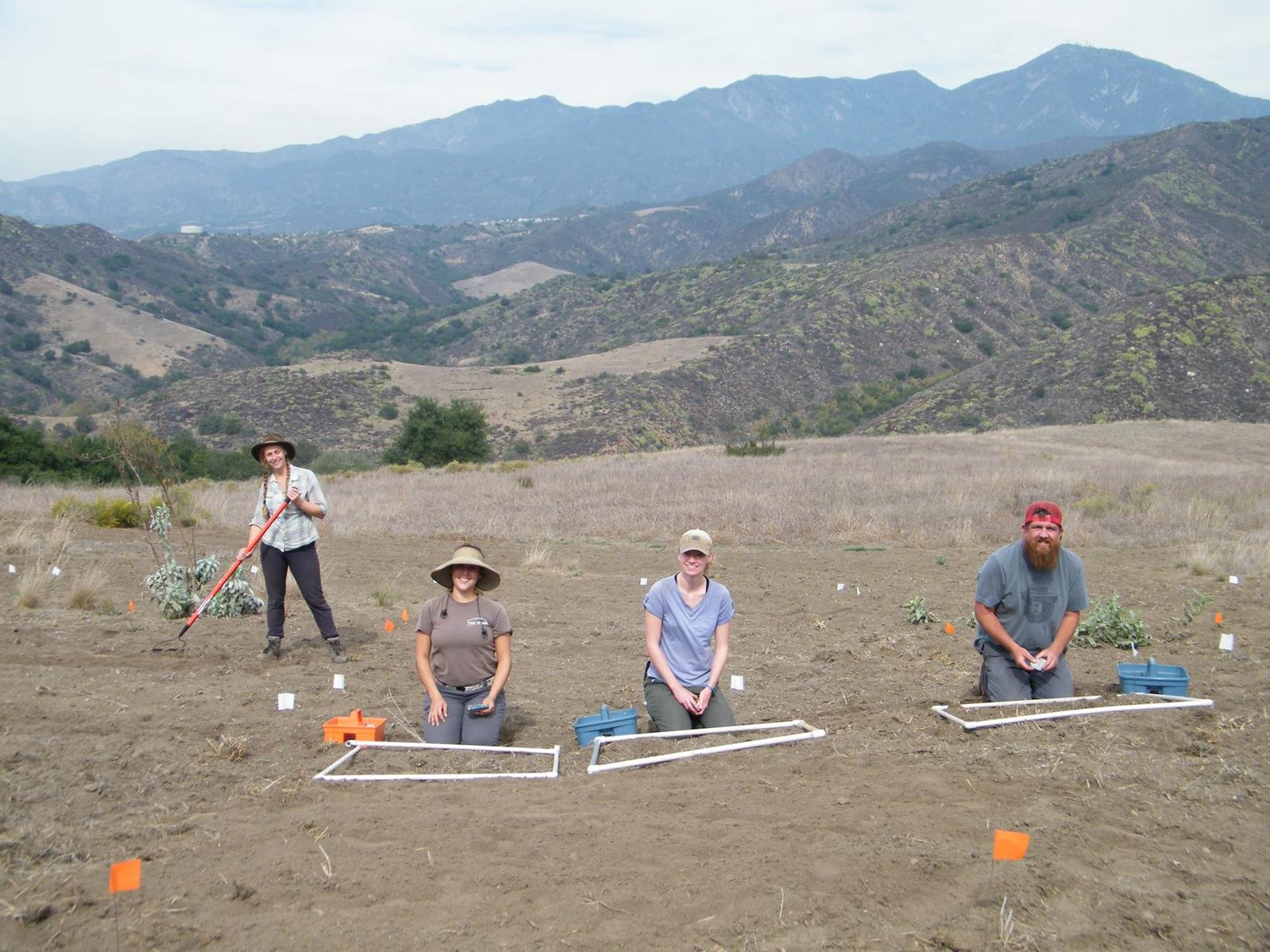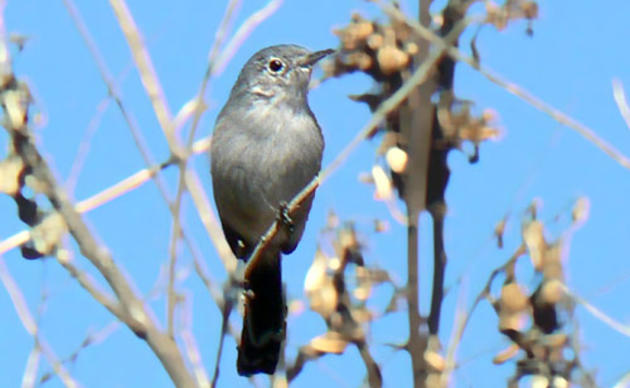
It's fall seeding time for coastal sage scrub restoration at Audubon Starr Ranch Sanctuary. Under the guidance of director of research and education, Sandy DeSimone, Starr staffers completed the first stage of seeding. For proper seed germination, a restorationist needs to know when rains will begin, how much rain will fall, and the temperature around the time of rain. Because predicting Southern California rain is impossible, a second seeding will be done in January to ensure the plants survive.
The site was covered with Harding grass up until the end of last season. A series of experiments helped the group find a nonchemical method to reduce it enough to start the restoration. Some methods used were: 1) repeated brush cutting, once per month, starting later in spring, 2) using a pick mattock to remove green parts and long underground stems called rhizomes, and 3) in a limited area surface tilling with a tractor once a month for several months for one season.
Birds that will benefit from the team's hard work bringing back the sage scrub community include Coastal California Gnatcatcher, Wrentits, Black-chinned Sparrows, California Thrashers, Rufous-crowned Sparrows, and hopefully Lazuli Buntings.
By Daniela Ogden
Raise your voice for California birds
Become an Audubon California activist. Subscribe to our action alerts and we'll send you information about saving the California Gnatcatcher and other birds facing threats.




